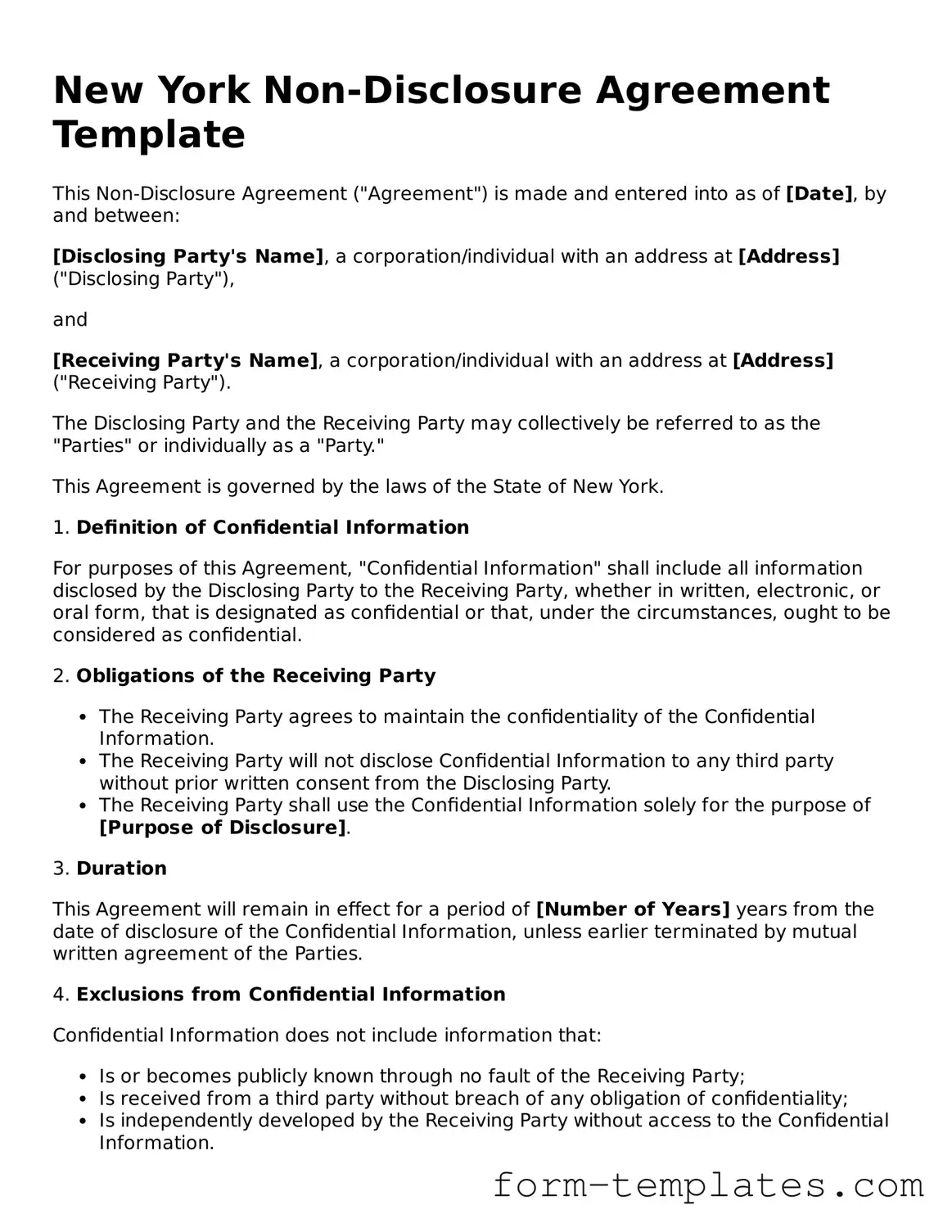New York Non-Disclosure Agreement Template
This Non-Disclosure Agreement ("Agreement") is made and entered into as of [Date], by and between:
[Disclosing Party's Name], a corporation/individual with an address at [Address] ("Disclosing Party"),
and
[Receiving Party's Name], a corporation/individual with an address at [Address] ("Receiving Party").
The Disclosing Party and the Receiving Party may collectively be referred to as the "Parties" or individually as a "Party."
This Agreement is governed by the laws of the State of New York.
1. Definition of Confidential Information
For purposes of this Agreement, "Confidential Information" shall include all information disclosed by the Disclosing Party to the Receiving Party, whether in written, electronic, or oral form, that is designated as confidential or that, under the circumstances, ought to be considered as confidential.
2. Obligations of the Receiving Party
- The Receiving Party agrees to maintain the confidentiality of the Confidential Information.
- The Receiving Party will not disclose Confidential Information to any third party without prior written consent from the Disclosing Party.
- The Receiving Party shall use the Confidential Information solely for the purpose of [Purpose of Disclosure].
3. Duration
This Agreement will remain in effect for a period of [Number of Years] years from the date of disclosure of the Confidential Information, unless earlier terminated by mutual written agreement of the Parties.
4. Exclusions from Confidential Information
Confidential Information does not include information that:
- Is or becomes publicly known through no fault of the Receiving Party;
- Is received from a third party without breach of any obligation of confidentiality;
- Is independently developed by the Receiving Party without access to the Confidential Information.
5. Miscellaneous
This Agreement constitutes the entire understanding between the Parties regarding the subject matter therein and cannot be modified except in writing signed by both Parties.
IN WITNESS WHEREOF, the Parties hereto have executed this Non-Disclosure Agreement as of the date first above written.
Disclosing Party: ____________________[Signature]
[Name]
[Title]
[Date]
Receiving Party: ____________________[Signature]
[Name]
[Title]
[Date]
